Washington D.C. The Victory Gardens at the Smithsonian National Museum of American History are a re-created World War II-era garden planted with “heirloom” vegetable and flower species.
Victory Garden History
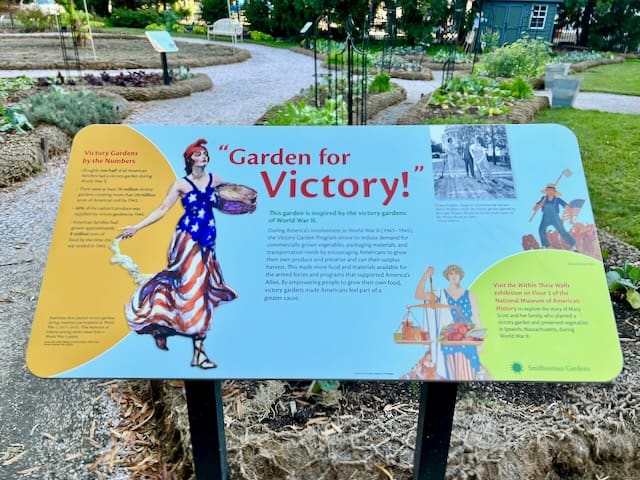
Victory gardens were vegetable gardens planted during the world wars to ensure an adequate food supply for American citizens and the armed forces. The gardens were all shapes and sizes—from window boxes to community plots.
The Victory Garden Program brought many different groups together to support a single cause. Corporations, private foundations, magazine publishers, and seed companies all contributed to the success of the project. These organizations collaborated with groups such as 4-H, Girl Scouts, Boy Scouts, Future Farmers of America, The Garden Club of America, and others to create communities of gardeners, canners, and seed savers.
Smithsonian Victory Garden WebSite
Victory Garden WW2
The Smithsonian Gardens estimates that roughly one-half of all American families had victory gardens during World War II.
Concerned about running out of food and other resources, people preserved the food they grew, and nothing was wasted. People saved cans, foil, and even leftover fat for recycling into war materials.
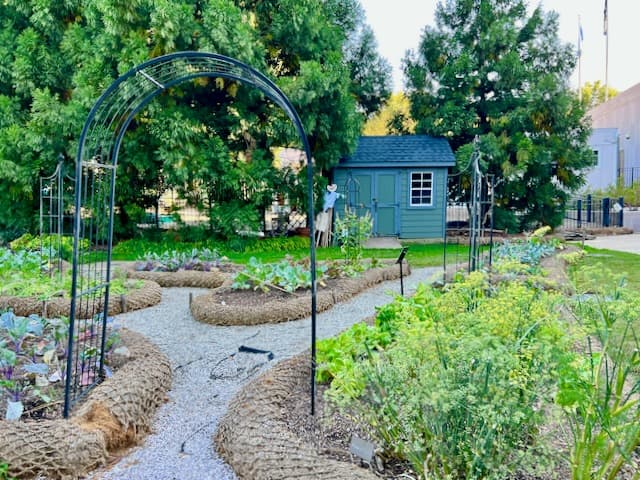
Victory Garden Benefits
While this effort was for the common good, there were many personal benefits to those who did their patriotic duty.
- People ate more locally grown fresh produce, which resulted in health benefits.
- Gardening required people to spend time outside producing physical health benefits.
- Communities came together, which increased morale and relationships among people.
Victory Gardens made Americans feel part of a more significant cause by empowering people to grow their own food. Wouldn’t it be wonderful to bring this spirit back in peaceful times?
The resurgence of the home gardening movement and the increase in community gardens suggest that Victory Gardens 2.0 is here.
Smithsonian Victory Gardens
Address: 1200 Constitution Ave NW, Washington, DC 20560, USA. Located on the east side of the Smithsonian National Museum of American History.
Common Ground: Our American Garden
Right around the corner, in front of the Smithsonian National Museum of American History, the Common Ground: Our American Garden continues the stories of plants and their importance to the nation’s people.
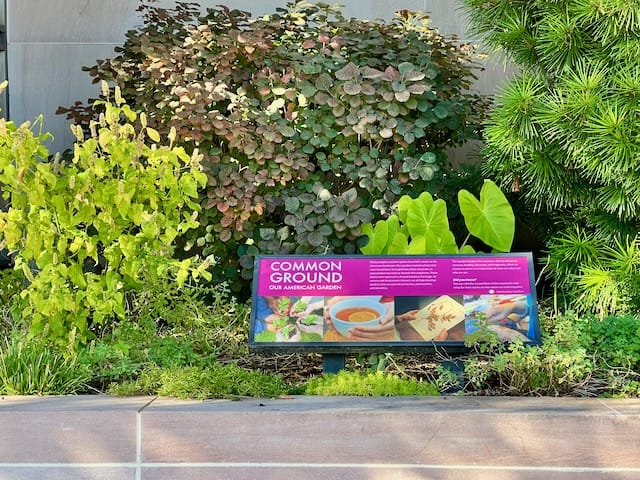
Many peoples and their plants have left a mark on the American Landscape. Our gardens include plants that were found here, brought from other countries, or passed down by seed or shared with neighbors. These plants now represent a shared American heritage. As natives and newcomers interact, we all develop gardens that are part of our homes, communities and identities.
Common Ground our American Garden
Four landscape themes planted in raised stone planters at the museum entrance capture Americans’ connections with plants. The themes include honoring memory, providing healing, promoting discovery, and inspiring ingenuity.
The plants and their relation to the Common Ground theme, Many Voices, One Nation, felt disconnected. The information panels were on point, but the plants didn’t make an impact during my visit in the fall.
Smithsonian Common Ground Garden
Address: 1300 Madison Drive Northwest, Washington D.C., USA. Located in the planters in front of the Smithsonian National Museum of American History.
Additional Resources for the Victory and Common Ground Garden
Learn more about the Victory Gardens and the Common Ground Garden on the Smithsonian Gardens website.
Dive deeper into the Common Ground Garden transformation on the Smithsonian Gardens website: Transforming the Heirloom Garden into Common Ground: Our American Garden.
Other Gardens Near the Victory Gardens
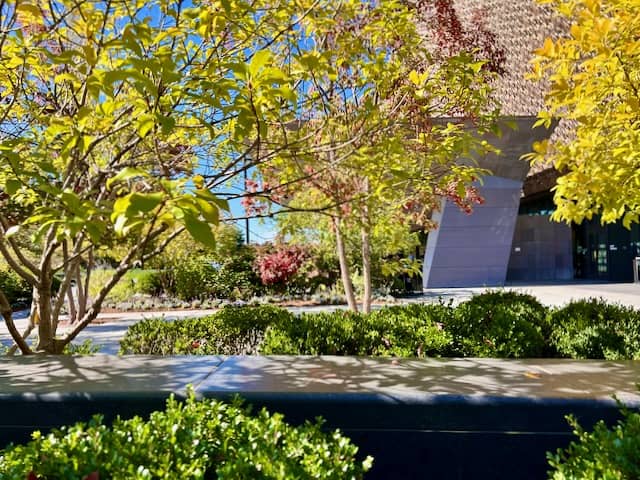
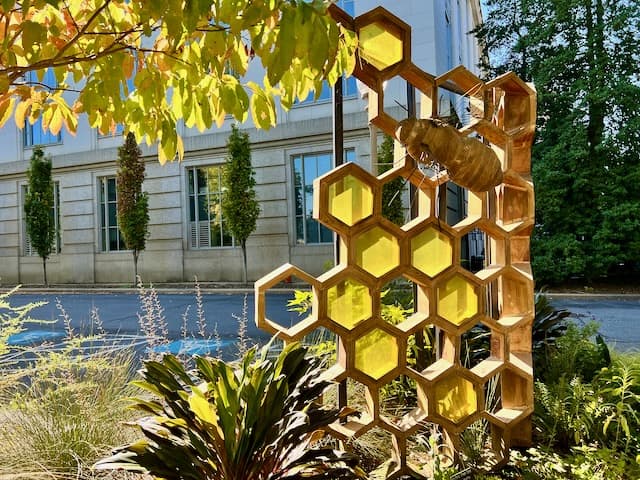

The closest Smithsonian garden to the west is The Landscape at the National Museum of African American History and Culture. 0.2 miles, (about a 4-minute walk).
To the east is the Pollinator Garden and the Urban Bird Habitat. 0.3 miles (about a 5-minute walk) to the National Museum of American History.
There are 13 Smithsonian Gardens near or on the National Mall. See the 13 Smithsonian Gardens You Can Enjoy for Free for a complete list of locations.
Recent Posts
Museums for All in Botanical Gardens and Arboretums Blooming with Access
Museums for All is an initiative that allows individuals and families receiving food assistance (SNAP EBT - Supplemental Nutrition Assistance Program Electronic Benefit Transfer) to gain free or...
San Diego Botanic Garden, Encinitas, CA: The San Diego Botanic Garden in Encinitas is a 37-acre sanctuary about a 30-minute drive north of the city of San Diego. Just a mile from the Pacific...
